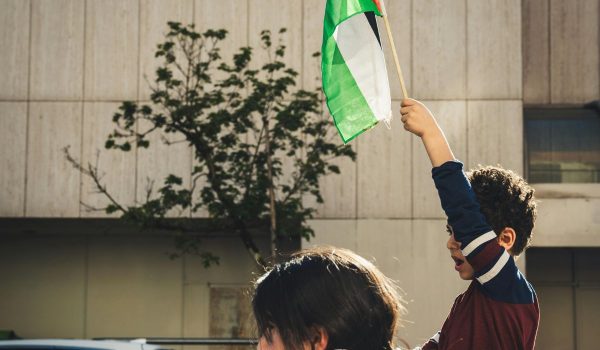Young people across Palestine and beyond are stepping up with powerful voices and new ideas. They aren’t waiting for permission or perfect timing. They’re organizing, speaking out, and taking action in their own communities—and globally—for justice, freedom, and dignity.
Youth-led campaigns have become an essential force in the movement for Palestinian rights. Their creativity, resilience, and clarity of purpose are inspiring not only other young people, but also allies, organizations, and communities who want to make a difference. Whether through digital media, campus organizing, or local initiatives, youth are proving that they are not just the future—they are leading right now.
What Youth Campaigns Are Doing Today
Across campuses, community centers, and online spaces, young activists are challenging injustice with smart, strategic action. These campaigns come in many forms. Some are focused on raising awareness through art and storytelling. Others work to change policy, both at the local and international levels.
In Gaza, West Bank, and East Jerusalem, youth initiatives have organized peaceful protests, created grassroots education programs, and launched social media movements that reach thousands around the world. They face risks, yet continue because their cause is deeply personal.
Outside of Palestine, young people in the diaspora are also building strong campaigns. They organize boycotts, write op-eds, and push for legislation that holds institutions accountable. They connect with other youth-led movements, understanding that justice is not limited by borders.
Why Their Leadership Matters
Youth bring a different kind of energy. They often lead with honesty and urgency, without the weight of political hesitation. They are quick to use tools like Instagram and TikTok to share their message in ways that connect emotionally and visually.
Their leadership is changing how people talk about Palestine. Instead of distant headlines, these young voices share real experiences, personal stories, and urgent calls for justice. It’s no longer just about news coverage—it’s about human connection.
And that connection matters. People are more likely to take action when they understand how policies affect real lives. Youth-led campaigns make that clear, often in just one tweet, reel, or speech.
Community Building and Peer Support
One strength of youth-led campaigns is how they build community. These campaigns don’t just fight injustice—they create spaces where young people feel seen, heard, and supported. Many groups offer mentorship, emotional support, and skill-building, helping each other stay grounded and motivated.
In places where organizing is dangerous, this kind of support is life-changing. Young people learn to protect each other, to work in teams, and to lean on one another when things get hard. It’s a kind of leadership that values care as much as courage.
In refugee camps, schools, and online networks, youth are leading with care. They are checking in on each other’s mental health, offering translation help, sharing resources, and making sure no one feels alone. That community spirit makes the movement sustainable.
Creative Tactics That Make a Difference
What makes youth-led efforts so unique is their creativity. Whether it’s painting murals, launching podcast series, or holding flash-mob demonstrations, these campaigns often surprise and engage audiences in fresh ways.
One student group created a traveling art exhibit that tells the story of Palestinian youth through photos, letters, and video clips. Another campaign turned QR codes into a tool to educate passersby on campus. These tactics not only inform—they spark curiosity and conversation.
Digital storytelling has also become a key tool. Instead of relying on traditional media, young people are using smartphones and editing apps to share what they see on the ground. Their content is honest, raw, and powerful.
Facing Challenges and Staying Resilient
Organizing isn’t easy. Many youth-led campaigns face censorship, online harassment, and threats. Some activists are arrested, monitored, or face pressure from schools or families. Yet they continue.
Their resilience is shaped by love for their communities, by the stories of those who came before them, and by their belief that change is possible. They know that even small actions—a post, a letter, a march—can ripple outward.
And when campaigns face setbacks, youth find new ways forward. They regroup, learn from experience, and adapt. This flexibility is part of their strength. They’re not afraid to try something different if it might reach more people.
Building Bridges With Allies
Youth-led campaigns don’t work in isolation. They build bridges across movements—connecting with Black Lives Matter organizers, Indigenous rights groups, climate justice campaigns, and more. These alliances help broaden the reach and deepen the message.
Young Palestinian activists often share stages with others calling for equity and justice, finding common ground and learning from each other. These partnerships help amplify the cause and remind everyone that justice anywhere strengthens justice everywhere.
By speaking together, these movements grow louder. By listening to one another, they grow stronger.
Looking Ahead With Hope
What we’re seeing now is only the beginning. As more young people get involved and take leadership, the movement for justice becomes more diverse, more dynamic, and more grounded in lived experience.
At PalestineWorks, we see the impact of youth-led campaigns every day. We support young leaders through mentorship, training, and visibility. We believe in their vision and in the change they are building.
These young voices are reshaping the conversation around Palestine. They are showing that leadership doesn’t have to wait until later—it can start with a post, a conversation, or a shared moment of truth.
And it’s working. People are listening. Institutions are responding. And more youth are stepping forward.
Because justice, after all, begins with action—and these young leaders are taking it every day.

